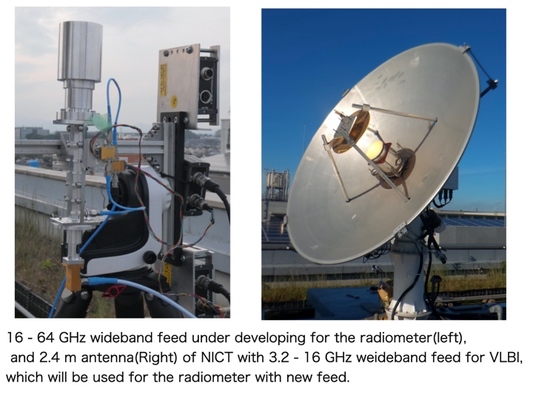Presenter: Hideki UJIHARA (Mission Research Fellow, RISH Kyoto University)
Title: Development of Universal Antenna
Place: Online
Associated Mission: Mission 2 (Advanced Development of Science and Technology towards a Solar Energy Society) and Mission 3 (Sustainable Space Environments for Humankind)
If you would like to participate, please e-mail me your name, affiliation and e-mail address by 10 am on the day.
(Open Seminar Office: rish-center_events@rish.kyoto-u.ac.jp)
Abstract
Wideband antenna can observe many spectral lines of molecules in the same time. And for continuum observation such as VLBI (Very Long Baseline Interferometer) or radiometer, that enhance sensitivity by wider bandwidth. For the next generation geodetic VLBI project, VGOS, wideband feed antennas were developed for newly constructed ring-focus 12 m dish to enable 2–14 GHz observation. That is 10 times wider than conventional VLBI system with S/X-band. SKA project in radio astronomy also uses wideband feeds to efficient observation. But the feeds have wide beam width and cannot fit conventional Cassegrain antennas. Thus, I developed 3.2–16 GHz feed that can be easily arranged to fit on Cassegrain focus of the antenna that needs narrow beam width or Parabola fucus that needs wide beamwidth. This unique wideband feed is a kind of a axial corrugated horn with lenses and multimode excitation for beam forming in wideband.
Now, 1.5–15.5 GHz wideband feed for an old radio telescope in EU and next generation radiometer (by JSPS Kakenhi 21H04524) are under development. This radiometer has just a single 16–64 GHz wideband feed to receive all of water vapor, water in the cloud and oxygen emission in the atmosphere simultaneously to reduce the error of the estimation of water vapor amount caused by oxygen and water spectrums. Also it use 90 cm or larger dish for higher special resolution than current commercial radiometers. For the future, I will develop the feed system over 100 GHz which can be reduce mass and space of the onboard remote sensing antenna in satellites. And, that may transmit both of data and power over the satellite constellation orbits on outer planets with various attractive satellites under weak solar power.

PDF file (161 728 bytes) | Top
9 November, 2021


